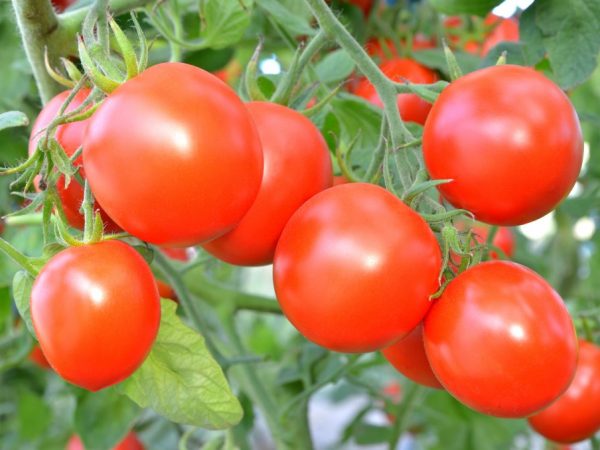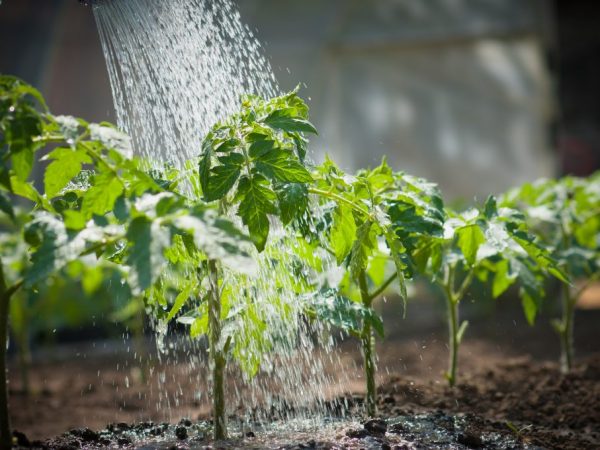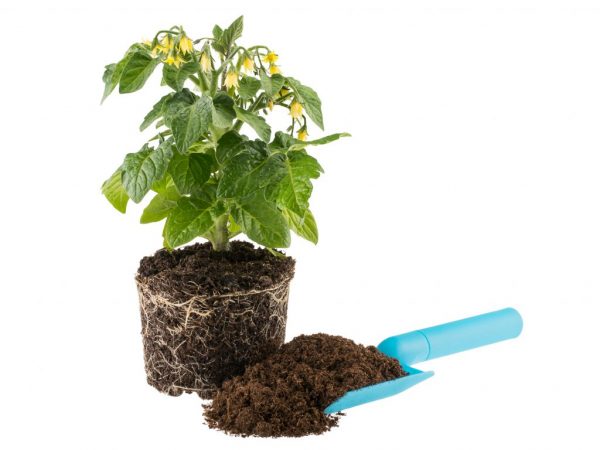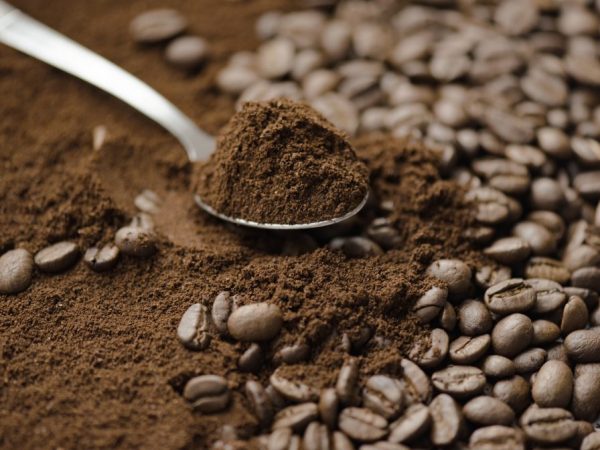Useful fertilizers for tomatoes in the open field
Tomatoes prefer fertile soil and are constantly in need of feeding. In order not to harm the plantings, the gardener needs to know which fertilizers for tomatoes in the open field can be used and which cannot. With proper nutrition of tomatoes, you can expect a good and tasty harvest.

Useful fertilizers for tomatoes in the open field
Where to place the beds
The successful cultivation of tomatoes depends on where you place your beds. This place should be well lit for at least 6 hours a day. Gusts of cold wind and drafts can be detrimental to your tomatoes.
If earlier nightshade trees grew on the garden bed, then tomatoes can be grown on it only after a few years. This is explained by the fact that insect larvae from nightshades continue to live in the ground for some time and can adversely affect tomatoes.
Plots of land with deep underground streams will do. But don't choose very wet soil. The beds should be placed in an easterly direction in the southern part of the garden. Thus, the earth will be equally heated to the desired temperature. The beds can be of different heights. In the north of the country, it is better to make high beds, in the depths of which organic fertilizers.
Soil preparation
So that feeding tomatoes in the open field does not damage your plantings, you should study its composition in advance. Different soil has a different ratio of useful microelements. Tomatoes love soil that is rich in nutrients. This significantly speeds up the process of fruit growth. Even in the fall, you need to start preparing the land in the country for the cultivation of tomatoes. If you do not have time to do this, then prepare the soil in your garden in early spring.
In autumn
In the autumn, you will need to start the process of preparing a plot of land for cultivating tomatoes. For this purpose, the earth must be dug up. In the course of your work, you need to add 5 kg of organic fertilizers per 1 sq. M of land.
Tomatoes are sensitive to soil acid levels. You can find out the acidity level with a piece of litmus paper. If the acid level is high, chalk will need to be added to the soil before winter begins.
Sometimes food waste is used to fertilize tomatoes in the open field. As a top dressing, potato peel is suitable. It is laid in the soil in the autumn during digging.
In the spring
In case of impossibility of autumn preparation, it is necessary in the spring, in the process of digging, to add organic fertilizers to the soil. Manure is suitable for this purpose. If you have already managed to prepare the soil in the fall, then at the beginning of spring you only need to loosen the soil.
In early spring, before the digging process, mineral, phosphorus fertilizer and potassium salt must be added to the ground.These substances are used before planting seedlings. The ground is leveled with a garden rake and cuttings are made in it for plants.
When to fertilize
Decide in advance and make a list of outdoor tomato fertilizers. For root or foliar feeding, minerals, organic and complex fertilizers are used. They are brought in after planting.
If you notice signs of a nutrient deficiency, you can carry out additional root or foliar feeding.
Root dressing

Ten days after planting, you need to fertilize the seedlings.
You need to fertilize tomatoes in the open field 10 days after planting. During this period, the seedlings will take root and be saturated with useful microelements. During this period, your tomatoes hardly grow. If the tomatoes do not start growing for 10 days, you will need to feed them. Once again, the tomatoes need to be fed after 15-20 days.
Make a feeding schedule so that during the entire growing season, the tomatoes are fed 3-4 times. In case of a lack of nutrients, it is recommended to make additional feeding. This will enable your tomatoes to quickly make up for the lack of nutrients.
Foliar dressing
Top dressing of tomatoes in the open field is mainly carried out by foliar method. You can engage in the process of spraying the leaves with useful solutions repeatedly during the summer season, but take a break from 10 to 15 days. You can use different fertilizers for this.
Foliar feeding helps to compensate for the lack of beneficial micronutrients and protect tomatoes from diseases and bugs.
- Before the beginning of the emergence of flowers, tomatoes in open ground can be fertilized with urea. You need to dissolve 1 tsp. substances in 10 liters of water.
- During the appearance of flowers and ovary, phosphorus fertilizer is applied. The liquid is consumed in the same amount as in the recipe described above.
- Spray systematically with a mixture of boric acid, copper sulfate and urea. To do this, simply add one teaspoon of the substance to one bucket of water.
- Boric acid can be added at all stages of plant cultivation. She will protect from many insects, so planting care is minimized.
You can make a foliar top dressing for tomatoes according to a folk recipe. Take milk, whey and medical iodine for this. This solution will protect your tomatoes from various diseases, insects, and will also supply them with useful microelements.
Mineral fertilizers
There are many recipes on how to make different mineral fertilizers on your own.
- During the first feeding, fertilizers are used, which contain nitrogen, it activates the process of growing vegetables: dilute 1 spoon of the substance in a bucket of water.
- At the stage of ovary formation and the appearance of fruits, nitrogen-phosphorus-potassium fertilizer is suitable, to which you need to add a growth stimulator - potassium humate.
- During the period when fruits are actively ripening, they require nutritional vitamins and elements P and K.
Mineral and phosphate fertilizers are not applied dry. You need to fill it with water 24 hours before starting feeding the plants.
Organic fertilizers

Do not apply too much fertilizer
Organics are used to feed tomatoes before the formation of flowers.
Excessive application of organic fertilizing is not recommended, as it affects the level of tomato yield.
Cow droppings
Livestock excrement is a popular fertilizer for tomatoes. They are used to make mullein. This litter is used to process plantings according to the feeding schedule.
According to the recipe for 4 buckets of water, take one bucket of cow excrement. The solution with the droppings is stirred and allowed to brew for several days in a room with a high temperature. The finished mixture is diluted with water. The litter contains nitrogen, which is necessary during the growth period.
Chicken droppings
Such droppings are a good substitute for fertilizers. But chicken droppings should not be used neat. It can be used with water or in combination with mineral fertilizers.
You can make an infusion: add 1 liter of chicken manure to a bucket of water. Then mix everything and let it brew. Then add water until you get a liquid chicken solution.
Organic mix
Summer residents are advised to use fertilizer, which is obtained by mixing manure, poultry excrement and minerals. This feeding will saturate your vegetables with a whole range of nutrients.
You need to mix 1 cup of chicken excrement and exactly the same amount of cow dung in a bucket of water. The consistency must be liquid, so water can be added if necessary. Let the solution brew before use.
Compost
Compost is a good, inexpensive and popular organic fertilizer. This fertilizer can be prepared at home.
Add half a glass of lime, the same amount of ash and 1 spoon of carbonic acid diamide to a bucket of herbs. Adding water and infusing the solution in a bucket for a couple of days, you can safely use the liquid for irrigating tomatoes.
Herb tincture
This tincture is a good way to feed tomatoes.
It is necessary to cut the grass, fill it with water and cover with a lid. Any herb from the garden will do. It is better to use several varieties of plants at once. When the grass begins to ferment, you need to open the solution and let it brew for 10-12 days.
When the tincture is ready, it must be filtered and water added until a brown mixture forms. It is allowed to add a little wood ash, manure or minerals to the herbal infusion.
Coffee dressing

Coffee grounds contain many vitamins
Coffee grounds are considered healthy for planting. It contains vitamins and minerals - N, P, K, Mg and many other elements. This fertilizer is considered neutral, as it contains a safe level of acidity for the soil. You can sprinkle dried coffee grounds near the stem of the plant, then pour water over the plant.
Another way to prepare top dressing based on coffee grounds: you need to take two parts of the grounds, one part of the straw and one part of the leaves. All components should be mixed and laid out on a clean surface in order for it to rewire. The mass is covered with thin cellophane or simply sprinkled with earth. The fertilizer will be ready in 21 days.
After such feeding, tomatoes will be saturated with substances necessary for full growth and development.
Leftovers from the coffee grounds are popular with worms. Loosening the soil, they supply the soil with oxygen. As a result, tomato roots breathe easily and grow.
Yeast feeding
Yeast is used to fertilize the root system of tomatoes. They have an active amount of vitamins and nutrients. Yeast gives off gases and heat during its fermentation, which has a beneficial effect on the plant. Remember that you can use yeast feeding when the ground is well warmed up.
Fertilizer can be obtained by adding yeast to warm water. To speed up the process, add a couple of tablespoons of sugar or homemade jam to the container. At the stage of fermentation, add 2-3 liters of warm water to the solution.
You can water the tomatoes with the resulting liquid. After such feeding, tomatoes grow quickly and create a lot of ovaries. It is not advisable to water tomatoes with this liquid more than 3 times during the entire growing season.
Fertilizer complex
In the later stages of cultivation, organic fertilizers are used in combination with mineral or other substances that contain a high level of chemical elements such as P and K.
- Manure and nitrophosphate are poured into a bucket of water. Add water to such a solution.
- For 10 liters of water, add 0.5 liters of mullein. Orthoboric acid and potassium sulfate are added to the liquid.
- You can dilute the mullein with plain water, then add the ash. Plantings can be treated with this solution.
Be sure to sprinkle plenty of water before feeding the tomatoes.
Factory fertilizers
You can use ready-made fertilizers to feed your tomatoes. They contain a whole set of basic and additional substances. Such dressings are used strictly according to the instructions.
Of the finished fertilizers, the following can be distinguished:
- Top dressing based on potassium, nitrogen and phosphorus. These granules are gray in color. The composition contains all the nutrients in the right amount.
- Kemira. The fertilizer is used for root feeding of seedlings at all stages of cultivation. Fertilizer is laid in the ground dry along the perimeter of the plant trunk. The granules dissolve during watering and saturate the fruits with useful elements.
- Solution. The composition contains all the necessary elements that are needed for the proper development of tomatoes. The fertilizer dissolves without residue in water and is quickly absorbed by plants.
Calcium nitrate, ammophos, nitroammophos do not contain all important microelements; when using them, additional feeding is needed.
Useful Tips
Tomatoes will grow well with you only with proper care. When growing, tomatoes need the introduction of nutrients. For the first time, fertilizer should be applied to the soil before planting the tomatoes.
Use organic and mineral fertilizers, as well as various available substances and food waste. You can fertilize tomatoes in different ways: by watering them at the root, or by spraying the leaves of plants.
If you follow these rules, you can grow ripe and tasty fruits.


